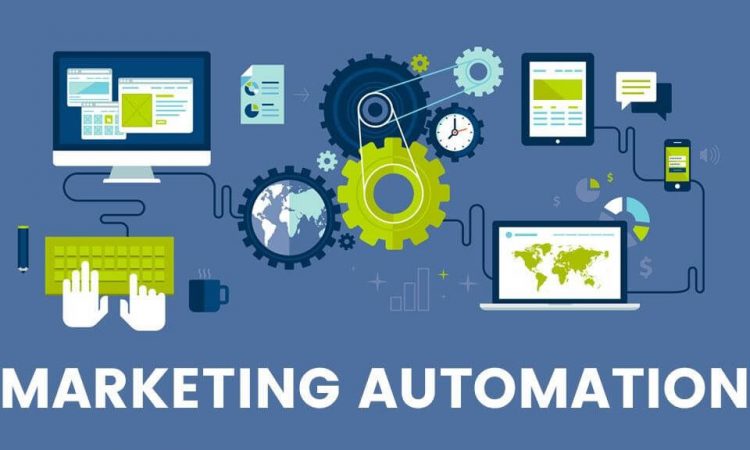The automation of marketing, new areas of focus by marketers, and new technology is going to change things quite a bit for 2018 and beyond.
Businesses that want to stay in the game, and even find their edge, must be alert to new tech, what the competition is investing themselves in, and hacks for operating even more efficiently. So, what’s new? Where can businesses find the advantage for finding and keeping more paying customers, and upgrading the bottom line?
What is Marketing Automation?
According to the Huffington Post, marketing automation is the automation of repetitive tasks, typically by leveraging software.
It can be a lot more than that too. Quite simply, it is streamlining and systematizing, and putting various parts of the marketing department on autopilot. Technology has a lot to do with it. Yet, it is also about how well you organize your operation and team. Not just for attracting new leads, but for following up, closing them, up-selling, and generating repeat and expanding sales opportunities.
If there is a task you’ll be doing more than once, you can operate more efficiently and typically more profitably, if you automate it as much as possible.
Why You Need It
There are many reasons to pursue more marketing automation, including:
- Consistency
- Branding
- Cost efficiency
- Minimizing overhead
- Cost savings
- Boosting marketing ROI
- Increasing bottom line profit
- Ease of scaling
Done right, automation lets you do a lot more, in less time, at less cost, and in turn; have more time to spend on activities with a much higher ROI, and do more.
If you are faster, leaner, and have better profit margins, you can bring in more money, and outmaneuver the competition, and serve your client base better.
So, in what areas are businesses and marketing platforms pursuing more automation? What technology is becoming available to empower more automation?
Getting More Out of What You’ve Got
Forbes predicts that in 2018 companies are going to be working harder to get more out of what they’ve got. That includes vendors and clients. There may certainly be more competitive pressure to give more to customers, and release more of their lifetime value in order to keep market share. However, studies suggest marketing spend, and especially digital marketing spend is only going to grow.
This is going to put more pressure on companies to automate follow up on leads, in order to win sales when prospects are ready to do business, and to do far better at automating regular contact to stay at the top of the mind, connect at key times, and to build customer loyalty, and repeat business.
Comcast is probably the worst possible example of this. It is an epic lesson in what not to do, if you want your business to survive. It’s hard to meet anyone who likes the company, or who hasn’t had a bad experience. It may be great at making big promises on TV and via direct mail. They’ve even sometimes delivered on the promise to get customers up and running in 48 hours. Unfortunately, it all seems to fall apart for most customers after that. Then there is no coordination between departments and customer facing contractors, millions have likely ditched the service because they can’t get services working after an issue.
One of the great automation services that can fill these gaps today is text or SMS. If there are local issues due to downed wires a TV or cable company could send bulk messages to affected users, alerting them to the problem, and assuring them it is being worked on. That would buy the company a lot of good will, and dramatically reduce the manpower and money required to field complaints or find new customers. In fact, an interactive message could even leverage users in pinpointing where the issue is in the line, and speeding up repairs, and saving more labor and relationships.
Bulk SMS and text message marketing can also be used for prospecting for new customers, and can be far more affordable than direct mail, TV, or hiring people to hang things on people’s doors. Sent with precise timing, i.e. when a competitor is suffering an outage, it can be used to rapidly boost market share. Or at billing time when too many larger companies get paperwork mixed up.
Customer Experience
Customer experience is believed to be the biggest factor in 2018. Consumers are expecting a lot. If brands don’t deliver they burn relationships and potential future relationships fast. That starts from the first promises they hear your company boast about, to the second they visit one of your assets, through delivery. This can involve the expectations set for delivery, convenience of delivery times, the packaging, and urgent questions on receipt which can make or break the relationship in seconds, and make all the difference in chargebacks versus referrals. Again, this can be handled far more efficiently when automated use text messaging, or some of the other tools we are about to touch on below. These can be far more efficient than old touch tone phone systems and trying to serve clients with poorly under-experienced and unmotivated call center agents.
AI
Artificial Intelligence is the big game changer and disrupter many fear, and some are leveraging to get the early advantage. We’re not talking about physical robots yet. Though there are plenty of ways that AI is showing up in subtle ways. Netflix and its movie suggestions, Siri, and Google Home, which even recognizes different members of the household, are all examples of this. In fact, more and more consumers, and even B2B customers are finding their solutions via voice. MarTech estimates that by 2020 at least 50% of all online searches will be by voice. That may be via mobile phones or smart home devices. Smart marketers are getting ahead of this by tweaking their SEO for voice commands, and to be the top recommended solution by these digital assistants. Set up right, this can automate directing customers to your place of business, or generating live sales calls.
Ad Targeting
Both Google and Facebook have been getting better at automating prospect targeting. This is showing up in keyword suggestions, customer behaviour and interest suggestions, new varieties of display feeds, and retargeting ads. This is dramatically slicing down the time involved in pinpointing the best prospects, increasing conversions, and getting campaigns up and running. It’s not always as accurate as expected. It still needs human expertise to decipher the data and really make the final calls and tweaks, but it is getting more and more effective.
Don’t Forget about Email
While email might not be as cool as it used to be, marketing statistics from Pagely suggest it can be far more effective than many realize.
- 91% of consumers us email every day
- Emails prompt purchases 3x more than social media
- Average orders from email are 17% higher than social
- Email is 40x more effective than Facebook and Twitter
- 66% of consumers have bought in response to email
Using autoresponders, segmenting lists, or using tag based email services like InfusionSoft can help deliver desirable custom messages, without spamming.
Video Prospecting
Video marketing, and its new channels really have the power to give new players the edge in business, even against much larger competitors. This can include video prospecting via email, and tapping into Facebook Watch and YouTube TV ad capabilities.
Ringless Voicemail
Ringless voicemail technology is growing as the secret marketing automation weapon that is being used to rapidly scale campaigns on modest budgets. While most of the world is battling on the digital forefront with social media and video, ringless voicemail can be far less expensive to produce, is better for getting noticed, and simply drive hot inbound lead calls, without bogging clients and sales teams down in complicated online funnels. It is definitely a tool to through into the marketing mix for 2018, and could prove to deliver a greater ROI than many of the above channels.





